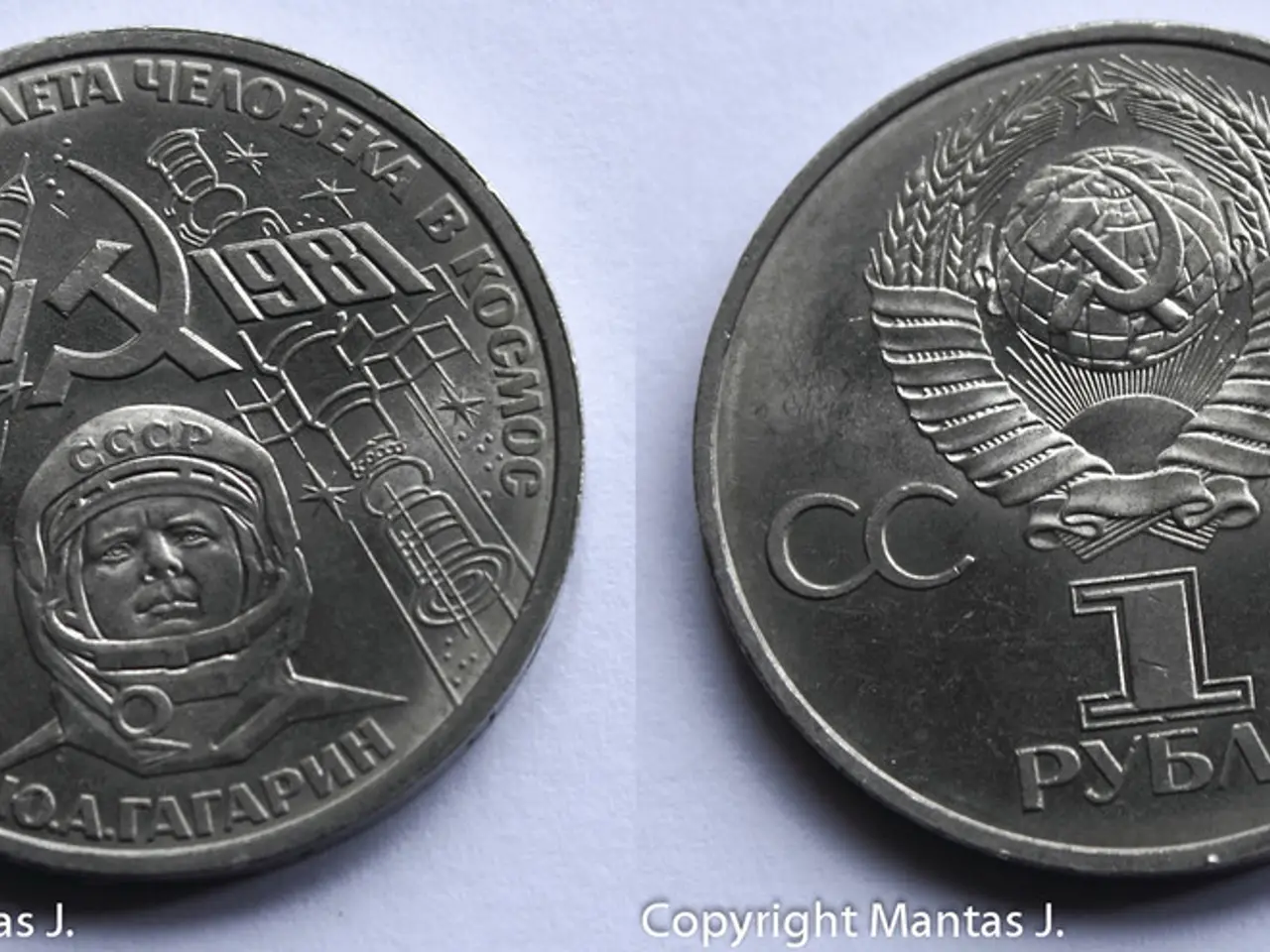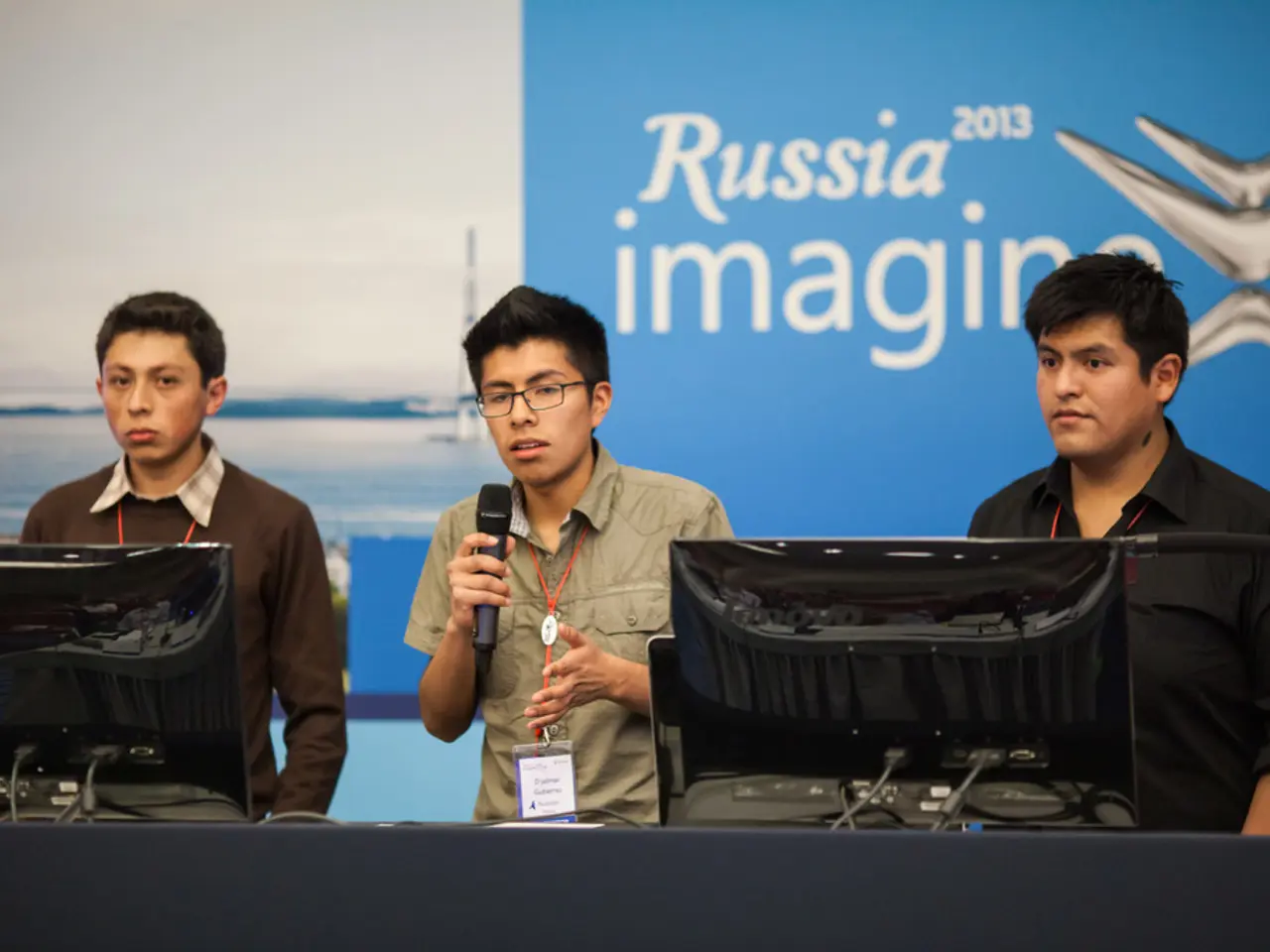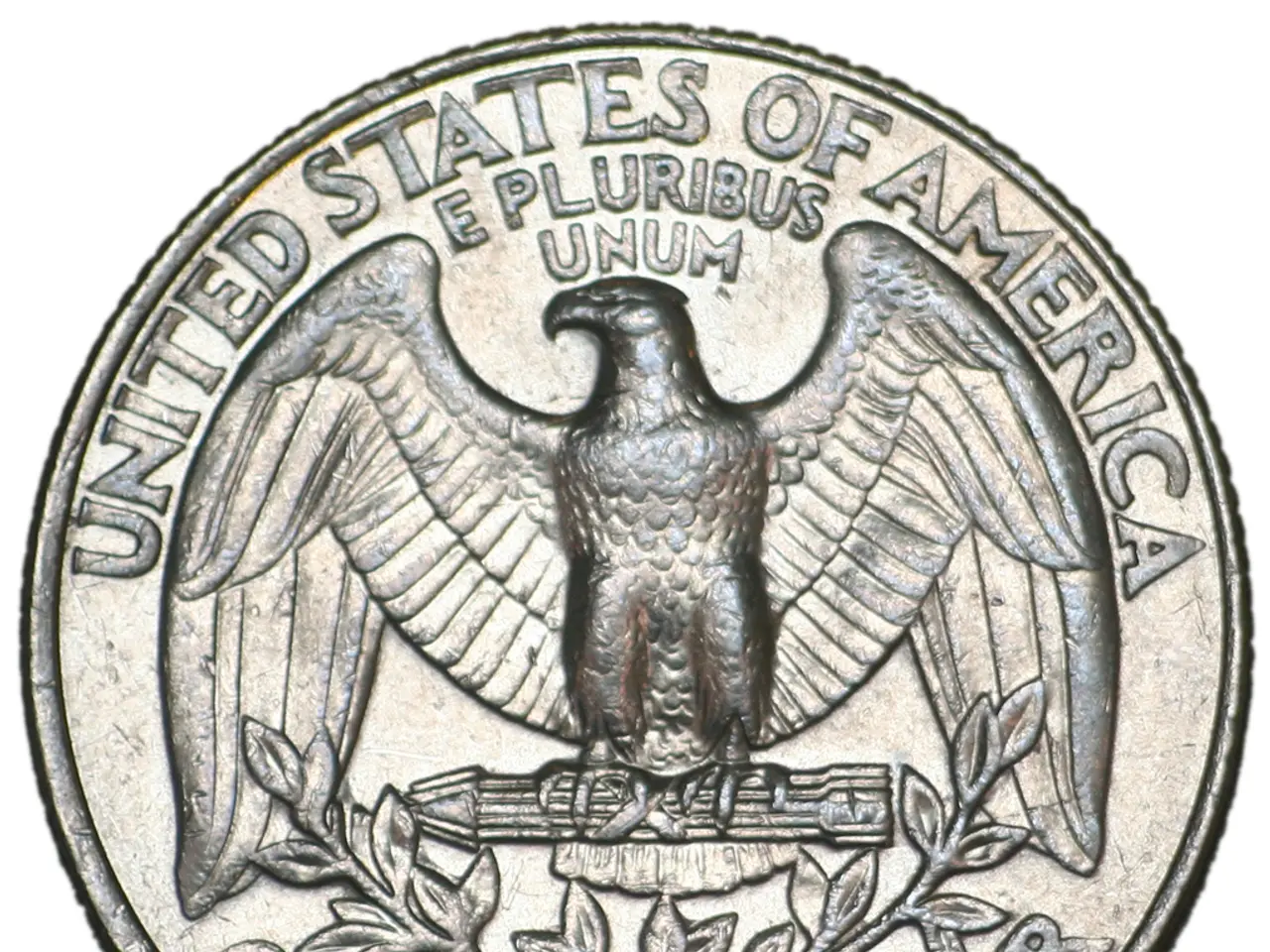Deutsche Bank advances its efforts in tokenized fund collaboration with DAMA 2, moving ahead in digital asset management.
Deutsche Bank Singapore's DAMA 2 project, a groundbreaking initiative in tokenized funds and blockchain interoperability, is set to revolutionise the asset management sector. Developed in partnership with Memento Blockchain and Interop Labs (founders of Axelar Network's interoperability protocol), the project aims to overcome key barriers to blockchain adoption, such as usability, privacy, transaction finality, and fragmentation across permissionless blockchains.
One of the key features of DAMA 2 is its privacy and regulatory balance. Sensitive data and personally identifiable information remain off-chain, while transactions occur on Memento Blockchain's ZKsync Layer 2 network using zero-knowledge proofs. This architecture ensures that only participants can see their own transactions, while regulators retain full oversight, addressing the tension between decentralisation and regulatory demands.
The project also boasts cross-chain interoperability, leveraging Axelar Network to provide seamless connectivity across different blockchains. This feature sets DAMA 2 apart from other interoperability solutions like Chainlink CCIP, Wormhole, and LayerZero.
Deutsche Bank plans to launch a minimum viable product (MVP) of the platform in November 2025, with the aim of lowering infrastructure costs for firms interested in tokenizing assets. This will enable asset managers and wealth advisers to create, distribute, and service tokenized funds more easily.
DAMA 2 is part of Deutsche Bank's larger digital asset strategy, which includes developing digital asset custody services, exploring stablecoin issuance, tokenized deposits, and cross-border tokenized settlements through various partnerships and projects.
Comparatively, other industry initiatives like Schroders, Apollo, Standard Chartered, BlackRock, and Franklin Templeton are advancing tokenized funds and digital assets. However, Deutsche Bank's project stands out for its technical emphasis on interoperability and regulatory balance, positioning it at the forefront of next-generation blockchain asset management infrastructure.
The DAMA 2 model also features an app store model, allowing managers to choose desired functionality and customise variables without developing contracts independently. Furthermore, a Paymaster function enables gas fee payments in traditional fiat currencies, and Layer 2 transactions undergo batch verification on Ethereum using zero-knowledge proof cryptography, preventing base blockchain users from accessing sensitive information.
As the asset management sector continues to leverage permissionless blockchains, DAMA 2 joins growing enterprise efforts to address fundamental barriers hindering blockchain adoption, with usability as the central objective. Recent pilots include collaborations between Schroders and Calastone, and Apollo with JPMorgan.
In conclusion, Deutsche Bank Singapore's DAMA 2 project represents a significant advancement in blockchain interoperability within asset management. Its sophisticated use of zero-knowledge proofs for privacy, a hybrid regulatory-friendly blockchain model, and integration of Axelar's cross-chain interoperability protocol directly tackle usability and fragmentation issues that have slowed blockchain adoption in asset management.
- Deutsche Bank Singapore's DAMA 2 project, designed to revolutionize the asset management sector, features a privacy and regulatory balance using zero-knowledge proofs, keeping sensitive data off-chain while maintaining regulatory oversight.
- The project also offers cross-chain interoperability through the use of Axelar Network, setting it apart from other interoperability solutions like Chainlink CCIP, Wormhole, and LayerZero.
- In November 2025, Deutsche Bank plans to launch a minimum viable product (MVP) of the platform, aiming to lower infrastructure costs for firms interested in tokenizing assets.
- The DAMA 2 model includes an app store-like feature, allowing managers to choose desired functionality and customize variables without independently developing contracts.
- The project is part of Deutsche Bank's larger digital asset strategy, which also includes developing digital asset custody services, exploring stablecoin issuance, and cross-border tokenized settlements.
- As the asset management industry continues to embrace permissionless blockchains, enterprise initiatives like DAMA 2 join growing efforts to address fundamental barriers, with usability as the central focus, as demonstrated by recent pilots between Schroders and Calastone, and Apollo with JPMorgan.



